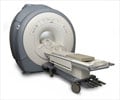Real-time intraoperative magnetic resonance imaging not only allows for better visualization and monitoring of the procedure, but also helps cell survival.

‘Real-time intraoperative magnetic resonance imaging not only allows for better visualization and monitoring of the procedure, but also helps cell survival.’





In a study using Real-time intraoperative magnetic resonance imaging
(RT-IMRI) to guide the transplantation of induced pluripotent stem cell-derived neurons into the brains of non-human primates modeled
with Parkinson's disease, researchers found that RT-IMRI guidance not
only allows for better visualization and monitoring of the procedure,
but also helps cell survival.
The study will be published in the upcoming special American Society for Neural Therapy and Repair (ASNTR) issue of Cell Transplantation."Our team developed an MRI-compatible trajectory guidance system that has been successful for intraoperative MRI," said study lead author Dr. Marina E. Emborg, Preclinical Parkinson's Research Program Center, Wisconsin National Primate Research Center University of Wisconsin-Madison. "We recently upgraded the system for real-time targeting and guidance and, as a result of the improvements, the procedure provides several advances for cell delivery."
The researchers report that the advancements allow for real-time pressure readings that can prevent clogging during cell delivery. They also found a way to prevent exposure to air during the procedure. Both advancements, in addition to real-time observation by MRI, add to the procedure's efficacy and safety.
Using post-mortem brain analysis, the researchers found that the transplanted cells grafted and survived well in the test animals after transplantation.
"The application of the RT-IMRI system for intracerebral targeting and delivery of iPSC-derived neuroprogenitors is feasible and presents and the advantage of allowing monitoring of cell uploading and infusion," concluded the researchers. "These methods will be particularly valuable for clinical application where safety and efficacy of the treatment is defined by the accurate delivery of cells."
Advertisement
Source-Eurekalert














